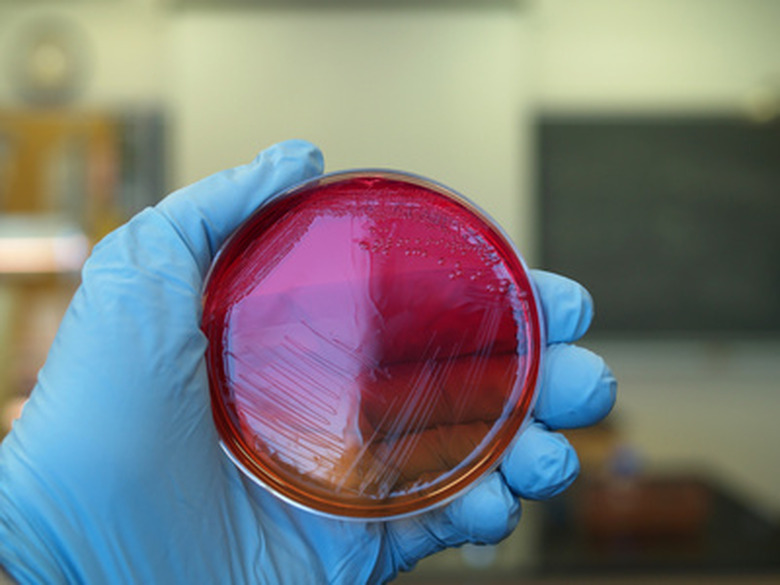What Types Of Cells Are Bacteria?
Bacteria are microscopic single-cell organisms that are neither plants nor animals. They are simple and ancient organisms; and there is evidence of bacterial life on earth 3.5 billion years ago. Bacteria are characterized by a lack of bound internal structures. Bacteria are among the smallest organisms on Earth but vary in size and shape. While some bacteria cause diseases in humans, many types of bacteria are benign, and even beneficial.
Kingdom Monera
Kingdom Monera
All living things can be divided into five kingdoms: animals, plants, fungi, protists–single-celled organisms, such as amoeba, which are more complex than bacteria–and monera. Bacteria belong to kingdom Monera, which can be further divided into archaea and bacteria.
Prokaryotes
Prokaryotes
All living things can be divided into two types of cells: prokaryotes and eukaryotes. Eukaryotic cells have a nucleus and other cell structures that are bound by a distinct membrane. Bacteria, as prokaryotic cells, lack these internal membrane-bound structures. This distinction is considered to be one of the most important of all biological classifications.
Unicellular
Unicellular
Bacteria are single-cell organisms. Bacteria are microscopic, usually 0.5 to 5 microns in length, and are generally smaller than eukaryotic cells. Unlike a human muscle cell or blood cell, a bacterial cell is a self-sufficient living being. While bacteria sometimes live together in large numbers, they are generally not dependent on one another for survival, and they do not perform specialized tasks.
Structures
Structures
Bacteria are usually one of three shapes: rod, sphere or spiral. Bacteria consist of cytoplasm–(the fluid in which the bacterial structures are suspended) –surrounded by a plasma membrane and further surrounded by a cell wall. The bacterial DNA, which is often one long circular strand plus a few small, circular pieces of DNA known as plasmids, lives in the cytoplasm. Attached to the outside of the cell wall of many bacteria is one or more flagellum, which the bacteria use for locomotion in fluids.
Activity
Activity
Most bacteria get nutrition by consuming dead organic material, though some get their energy from consuming living cells, by performing photosynthesis, or the creation of food from light, or by performing chemosynthesis, the creation of food from inorganic chemicals.
Pathogenic bacteria can cause disease either by attacking living tissue or by excreting toxins. Some bacteria require oxygen; but oxygen is unnecessary and sometimes toxic to other forms of bacteria.
Reproduction
Reproduction
Most bacteria reproduce by simple cell division, though some divide into unequal pieces through budding or fragmenting (See Reference 4). Because of their small size and simple structures, bacteria can reproduce quickly. In ideal conditions, bacteria can divide, grow and divide again in less than 20 minutes.
Cite This Article
MLA
Brooks, Lizzie. "What Types Of Cells Are Bacteria?" sciencing.com, https://www.sciencing.com/types-cells-bacteria-6817651/. 24 April 2017.
APA
Brooks, Lizzie. (2017, April 24). What Types Of Cells Are Bacteria?. sciencing.com. Retrieved from https://www.sciencing.com/types-cells-bacteria-6817651/
Chicago
Brooks, Lizzie. What Types Of Cells Are Bacteria? last modified March 24, 2022. https://www.sciencing.com/types-cells-bacteria-6817651/
